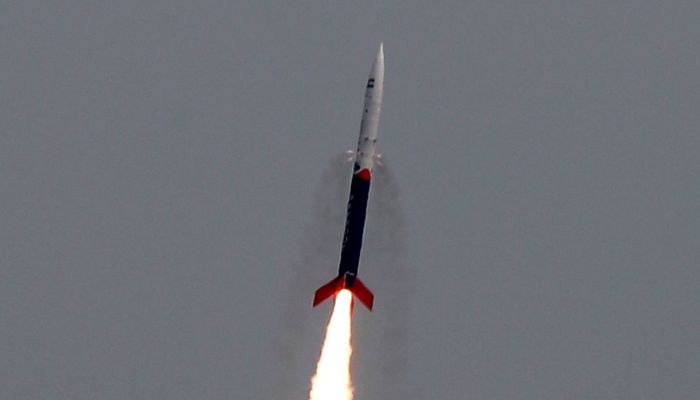[ad_1]
Chennai: the first Private sector development An Indian rocket blasted into the upper reaches of the atmosphere on Friday, marking another milestone in the country’s quest to become a rocket major space power.
Live footage from the Indian Space Research Organization (ISRO) showed the half-ton Vikram-S rocket launched just before midday local time and traveled in an arc.
The agency said he fell safely into the sea six minutes later.
The rocket, developed by local startup Skyroot Aerospace, reached a peak altitude of 90 km (55 miles), below the internationally recognized 100 km Karman Line that separates Earth from outer space.
“It really is a new beginning, a new dawn… on a journey Indian space programmeScience Minister Jitendra Singh said after the launch to a crowd of cheering technicians at the Indian Space Research Organization’s launch facility on the southern island of Sriharikota.
The government said Thursday ahead of the first Vikram-S mission, called “Prarambh” (“Start”), that the single-stage, solid-fuel rocket was built using “carbon composite structures and 3D-printed components”.
India has ramped up its space program in recent years, including a Russian-backed manned mission scheduled for 2023 or 2024.
Its capabilities and ambitions have grown, most notably the success of its rockets and extraterrestrial missions.
In 2014, India became the first Asian country to reach Mars with its Mangalyaan rover. Hailed for its low cost, the mission put India into a junior club of the United States, Russia and the European Union.
And in 2019, Prime Minister Narendra Modi hailed India as a “space superpower” after it shot down a low-orbiting satellite, a move that drew criticism over the amount of “space trash” it had created.
India is also increasing its 2% share of the global commercial space market.
In October, ISRO’s heaviest rocket yet successfully placed 36 broadband satellites into low Earth orbit.
Experts say India can keep costs down by copying and adapting existing space technology, and thanks to an abundance of highly skilled engineers who earn a fraction of the wages of their foreign counterparts.
[ad_2]
Source link

